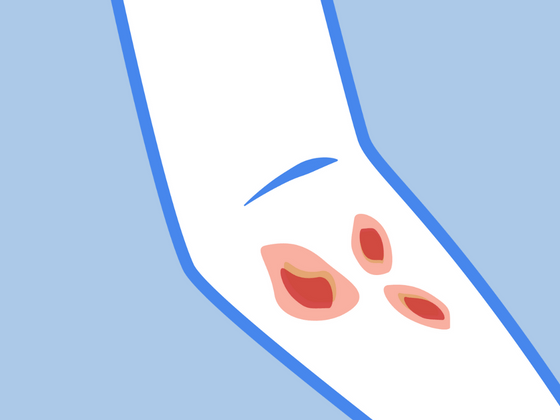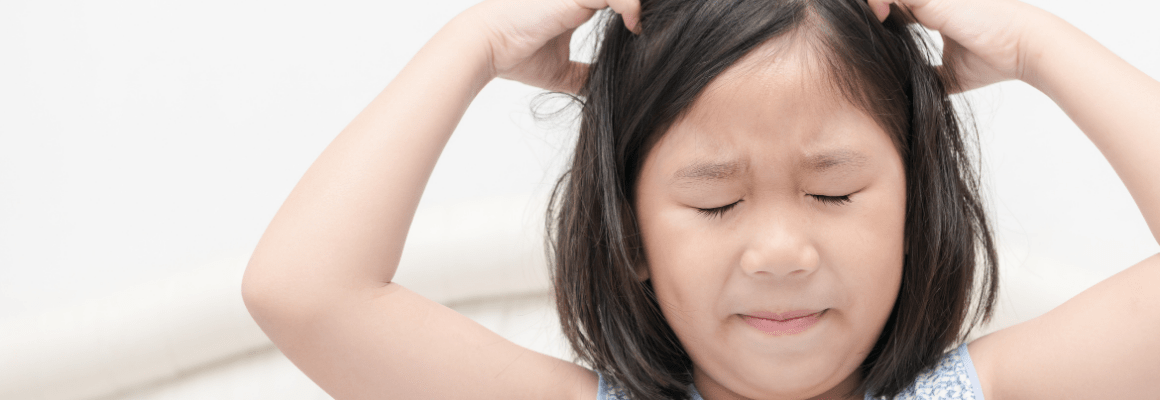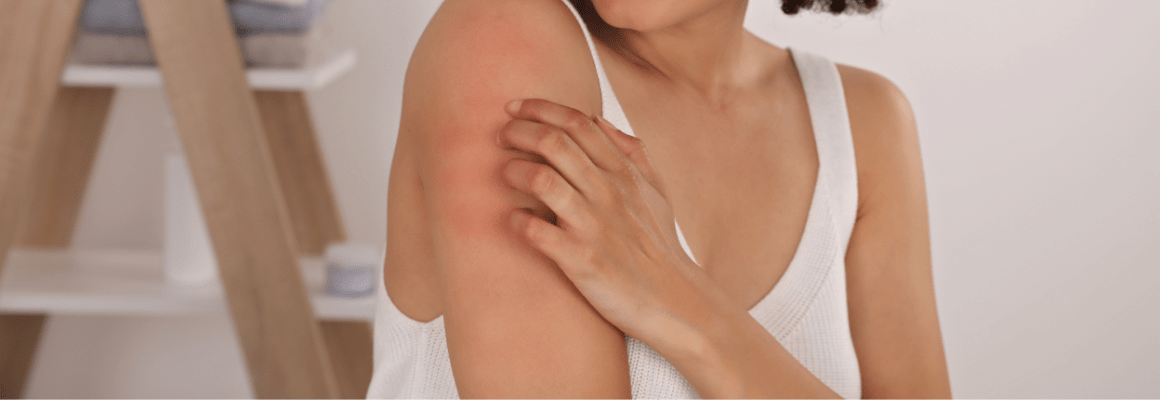Does your child suffer from psoriasis? This itchy skin condition affects up to 40% of people before age 16 and 10% before they’re 10 years old. In this blog post, we’ll go over the common types of kid psoriasis, as well as provide the best methods for managing symptoms.
Please keep in mind that although what we discuss in this post can relieve psoriasis, we are in no way medical professionals. If you’re experiencing severe psoriasis symptoms like an infection, it is best to seek medical advice immediately.
What is Psoriasis?
Psoriasis is a common and chronic skin condition – but it is not contagious. Knowing this, it’s important to make sure your child socializes with others to help them build a strong social network and avoid feelings of isolation.
Those with psoriasis have an overactive immune system that causes the skin cells to reproduce faster than usual. This increased production of skin cells leads to a build-up identified by the red, flaky patches with silvery scales that form.
Researchers are unsure of the exact cause of the condition but there is believed to be a strong genetic component. Though psoriasis is a life-long condition, flare ups come and go with different degrees of severity.
Common Types of Child Psoriasis
Children are more likely to suffer from psoriasis on their face or around their joints. Here are the most common types of psoriasis in children:
Plaque psoriasis: This is the most common type in kids. It’s characterized by itchy, red, dry patches known as plaques. They can be covered in silvery scales. While plaques can appear anywhere on the body, the most common places include knees, elbows, scalp, and torso. Compared to plaque psoriasis in adults, the patches are smaller, thinner, and less scaly in children.
Guttate psoriasis: Also known as "drop-like" psoriasis, this type is identified by small red dots that develop on the back, arms, legs, and trunk. It’s more likely to appear after an illness like strep throat.
Inverse psoriasis: These patches develop in spots where the skin touches or rubs against itself, such as the armpits, buttocks, upper eyelids, groin and genitals. If suffering from inverse psoriasis the skin will look raw, red, smooth and shiny.
How to Treat Psoriasis in Kids
Dealing with psoriasis can be difficult for children. Visible lesions may affect their confidence and cause them to socially withdraw at school. Intense itchiness can also be a distraction that prevents them from concentrating during the day or sleeping well at night. To help you and your child manage irritating symptoms, we’ve included some of our favourite natural remedies for psoriasis:
Wear Psoriasis-Friendly Clothing
As clothing comes into direct contact with the skin, it’s important to wear garments that will soothe instead of irritate. We recommend this Remedywear™ Long Sleeve shirt and their matching pants. Made with soft TENCEL and embedded with anti-inflammatory zinc, they provide soothing relief and scratch protection for the whole body. With a form-fitting design, they truly fit like a second skin and are great for wearing underneath regular clothing during the day or as pajamas at night.
Apply a Natural Moisturizer
This Organic Manuka Skin Soothing Cream is perfect for the delicate skin of children thanks to its non-burning, non-sticky formula. It uses just six, natural ingredients - including Manuka honey - to provide a gentle treatment that’s effective on adults, kids, and even pets! Rich in emollients, it’s soft on the skin and soothes irritation like a dream. We also recommend our Body Essentials Bundle which features the gentle cream in combination with our Coconut and Sunflower Oil Soap Bar.
Try Dry Wrap Therapy
Dry wrap therapy is a great way to target problem areas on the body. It’s also easy to do: simply apply an emollient to slightly damp skin and cover it with clothing to lock in the moisture. These Remedywear™Bandages are especially useful in targeting difficult areas like elbow and knee creases.
References:
https://www.medicalnewstoday.com/articles/319656
https://kidshealth.org/en/parents/psoriasis.html
https://www.webmd.com/skin-problems-and-treatments/psoriasis/pediatric-psoriasis-facts
https://www.healthline.com/health/psoriasis/psoriasis-in-children
------------------

Bio: Laura is a contributor and content developer for The Eczema Company. She is in no way a medical professional. Her comments, suggestions, and reflections are not intended to replace any medical advice. Always seek the help of a medical professional before undertaking any diet or lifestyle changes.








